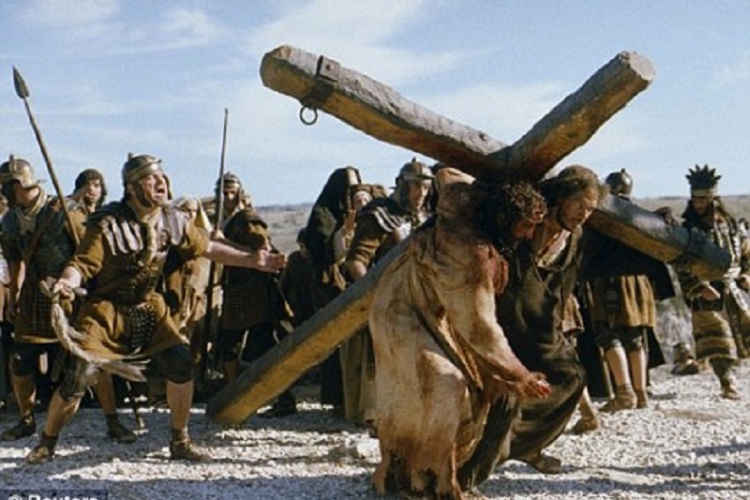Christians Mark “Good Friday” Today

The christian community is commemorating the crucifixion of Jesus Christ and his death at Calvary.
Good Friday is a Christian holiday and it is observed during Holy Week as part of the period of three days that begins with the evening Mass of the Lord’s Supper, reaches its high point in the Easter Vigil, and closes with evening prayer on Easter Sunday.
The day is also known as Holy Friday, Great Friday.
On this day in history, Jesus was arrested and was tried, in a mock trial.
He was handed over to the Roman soldiers to be beaten and flogged with whips.
A crown of long, sharp thorns was thrust upon his head.
Jesus was forced to carry his own cross outside the city to Skull Hill.
He was so weak after the beating that a man named Simon, who was from Cyrene, was pulled from the crowd and forced to carry Jesus’ cross the rest of the way.
Jesus was nailed to the cross.
Two other criminals were crucified with him, their crosses were on either side of him.
A sign above Jesus read “The King of the Jews.”
The crucifixion of Jesus occurred in 1st century Judea, most likely between AD 30 and 33.
Jesus’ crucifixion is described in the four canonical gospels, referred to in the New Testament epistles, attested to by other ancient sources, and is established as a historical event confirmed by non-Christian sources, although among historians, there is no consensus on the precise details of what exactly occurred.
However, Members of the Christian community, including the Anglican, Catholic, Eastern Orthodox, Lutheran, Methodist, Oriental Orthodox and Reformed traditions, observe Good Friday with fasting and church services.
The date of Good Friday varies from one year to the next on both the Gregorian and Julian calendars.
Eastern and Western Christianity disagree over the computation of the date of Easter and therefore of Good Friday.
According to the accounts in the Gospels, the royal soldiers, guided by one of Jesus’ disciple Judas Iscariot, arrested Jesus in the Garden of Gethsemane.
Judas received money (30 pieces of silver) (Matthew 26:14–16) for betraying Jesus and told the guards that whomever he kisses is the one they are to arrest.
Following his arrest, Jesus was taken to the house of Annas, the father-in-law of the high priest, Caiaphas.
There he was interrogated with little result and sent bound to Caiaphas the high priest where the Sanhedrin had assembled (John 18:1–24).
Conflicting testimony against Jesus was brought forth by many witnesses, to which Jesus answered nothing.
In the morning, the whole assembly brought Jesus to the Roman governor Pontius Pilate under charges of subverting the nation, opposing taxes to Caesar, and making himself a king (Luke 23:1–2).
Pilate authorized the Jewish leaders to judge Jesus according to their own law and execute sentencing; however, the Jewish leaders replied that they were not allowed by the Romans to carry out a sentence of death (John 18:31).
Pilate questioned Jesus and told the assembly that there was no basis for sentencing.
Upon learning that Jesus was from Galilee, Pilate referred the case to the ruler of Galilee, King Herod, who was in Jerusalem for the Passover Feast.
Herod questioned Jesus but received no answer; Herod sent Jesus back to Pilate.
Pilate told the assembly that neither he nor Herod found Jesus to be guilty; Pilate resolved to have Jesus whipped and released (Luke 23:3–16).
Under the guidance of the chief priests, the crowd asked for Barabbas, who had been imprisoned for committing murder during an insurrection.
Pilate asked what they would have him do with Jesus, and they demanded, “Crucify him” (Mark 15:6–14).
Pilate’s wife had seen Jesus in a dream earlier that day, and she forewarned Pilate to “have nothing to do with this righteous man” (Matthew 27:19).
Pilate had Jesus flogged and then brought him out to the crowd to release him.
The chief priests informed Pilate of a new charge, demanding Jesus be sentenced to death “because he claimed to be God’s son.”
This possibility filled Pilate with fear, and he brought Jesus back inside the palace and demanded to know from where he came (John 19:1–9).
Coming before the crowd one last time, Pilate declared Jesus innocent and washed his own hands in water to show he had no part in this condemnation.
Nevertheless, Pilate handed Jesus over to be crucified in order to forestall a riot (Matthew 27:24–26) and ultimately to keep his job.
The sentence written was “Jesus of Nazareth, King of the Jews.”
Jesus carried his cross to the site of execution (assisted by Simon of Cyrene), called the “place of the Skull”, or “Golgotha” in Hebrew and in Latin “Calvary”. There he was crucified along with two criminals (John 19:17–22).
Good Friday is a widely instituted legal holiday around the world, including in most Western countries. and U.S. states.
Some countries, such as Germany, have laws prohibiting certain acts, such as dancing and horse racing, that are seen as profaning the solemn nature of the day.
Why is it called “Good Friday”?
At first glance, it seems a strange name for day that marked such a terrible event as a crucifixion, but when we look at the origin of the name it becomes clearer… or it would if there was one origin that people could agree on. As it stands, you can take your pick from the following:
Some say it comes from the use of “Good” as an adjective applied to the day, which is an Old English synonym for “holy.”
Others believe it stems from a corruption of the word “God,” in much the same way that “Good Bye” comes from the phrase “God be with ye.” So the name may be derived from ‘God’s Friday’.
Undoubtedly most Christians perceive the day as “good” because the message of Easter is of Christ’s victory over sin, death, and the devil.
Indeed, the New Testament is also known as the Gospel, which is Greek for ‘Good News’.
Also, it also worth noting that this confusion over the name is confined to mostly Western European and North American Christians. Eastern Orthodox Christians call it “Great and Holy Friday.
Around the rest of the world, it’s known as Holy Friday in most Latin nations, ‘Great Friday’ by the Slavic peoples, “Friday of Mourning” in Germany and “Long Friday” in Norway.
In Bermuda, it is traditional to fly kites on Good Friday.
These are often handmade affairs with wooden sticks, tissue paper, glue, and string.
The use of wood and the shape of the kite is intended to represent the cross, and the kite flying in the sky symbolizes his ascension to heaven.
Portions of this article is culled from Wikipedea
Compiled by Ruth Abla Adjorlolo
Source: GBCONLINE




